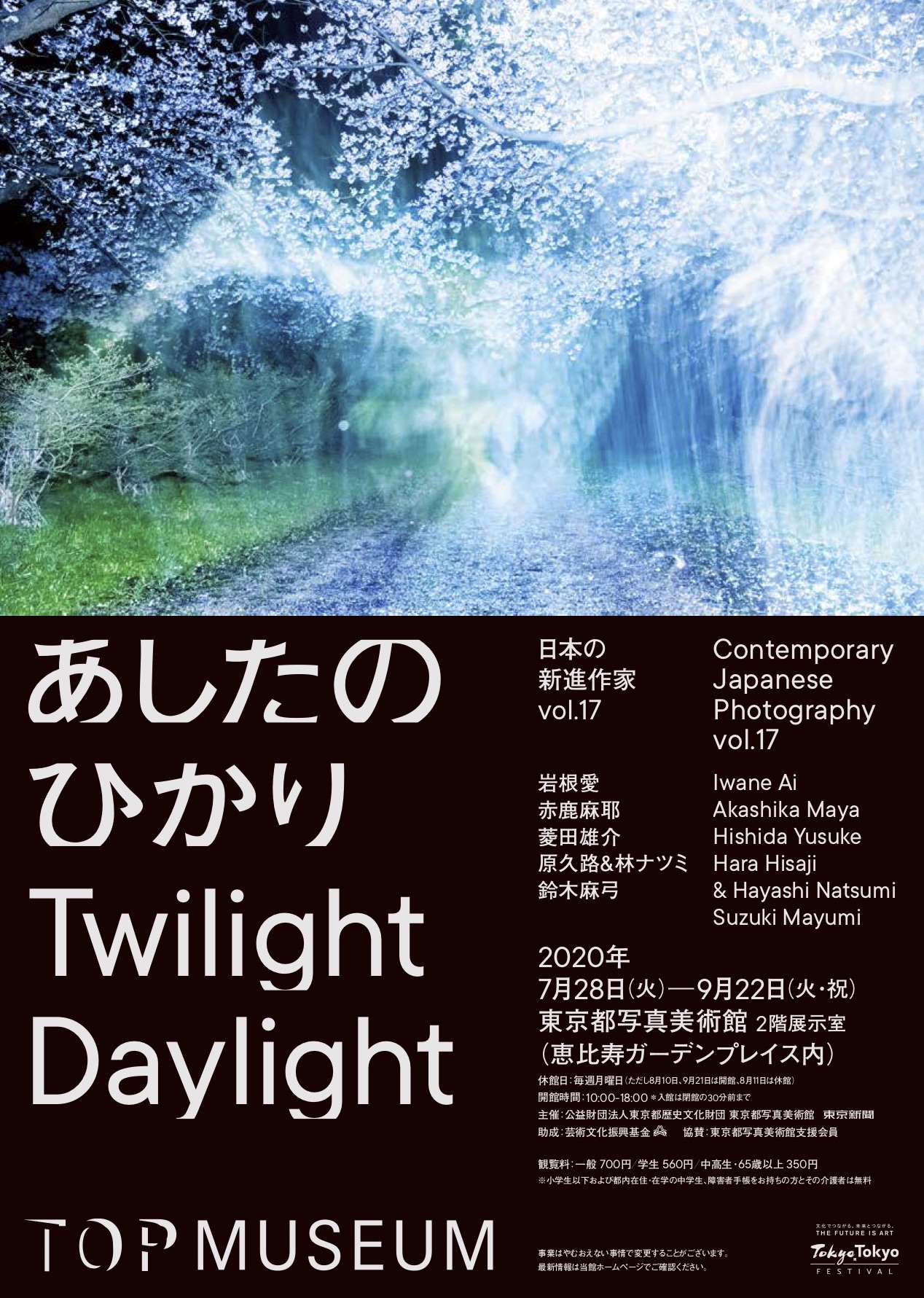あしたのひかり 日本の新進作家 vol.17
東京都写真美術館「氷の国をつくる」
2020.7.28(火)—9.22(火・祝)
And Do Not Forget. That It Was Transparent.
Twilight Daylight Contemporary Japanese Photography vol.17
Jul. 28—Sep. 22, 2020
Tokyo Photographic Art Museum
https://topmuseum.jp/contents/exhibition/index-3815.html
展覧会図録
http://www.nadiff-online.com/?pid=152544584
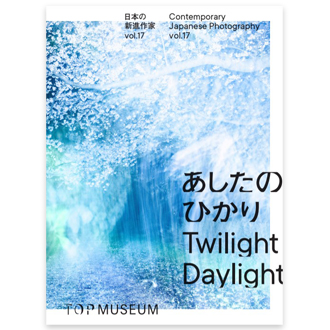
Akashika Maya is an artist who gives photographic expression to mental images, and won the Canon New Cosmos of Photography Grand Prize in2011. Her past work includes portraits of friends wearing bizarre clothing and posing with props in staged situations, and her performance-style productions earned her recognition as a fascinating outlier around 10 years ago when straightforward photography predominated among young photographers. The artist says she later realized that "there are limitations to the images you can create out of only your own experiences." After completing her Did you... series in 2015. "no images came to mind" and she "no longer had any desire to do the kinds of projects she had done in the past. So, instead of "imposing my own scenarios on people" as in her previous practice, she thought *on the contrary I would like people to give me ideas and decided she would "change the way (she] communicated with people." After conducting a survey where she asked around 100 people the question What was your most memorable dream?" she realized she was strongly compelled by the dreams of others and sought to render them visible, but at that point she hit a major stumbling block.According to Akashika, *what moved me about people's dreams had to do with sensation, it was invisible things that could never be turned into a photograph. If someone dreamt they were flying. you could do your best to replicate it using movie-style special effects. but what I wanted was to induce the thrilling feeling of flying. I started thinking I had chosen the wrong medium when I became a photographer...** It seems to me that this anecdote, which describes a creative turning point, also reveals Akashika's essence as an artist. For her the sensorial quality of experience, which is not something the eye can see, is of paramount importance. Meanwhile, photography is a medium that documents only what is visible, and cannot capture things like dreams. Caught up in this conflict. Akashika is engaged in a prolonged process of trial and error with the mission of "generating sensation" and exploring "something like the structure of dreams, the world of the surreal.Her new work featured in this exhibition. Building the Ice World, is composed of various elements including photographs, video, sound. paintings primarily in watercolor, scenarios handwritten in notebooks. and circular mirrors. While its central episodes are her experiences traveling to Harbin Ice and Snow World, an ice theme park open only in winter in the city of Harbin in Heilongjiang Province, China, it goes beyond these actual experiences, and a major highlight of the work is seeing how images of "the ice world" were generated in the artist's mind and the process by which she sought to give them visible form. It begins with her photographing scenes of ice fairies emerging from a refrigerator's freezer. inspired by a line in a children's book she read as a child: "In the freezer. it's always midwinter at the North Pole." She went on to replicate a hair freezing contest she discovered online, and documented the process of reaching Harbin Ice and Snow World, and these stages not only show the prehistory of this work, but also reveal how its theme emerged as an extension of the artist's senses and ideas.
Intriguing characters such as the Ice Makers, the Guide, the Residents, and Ms. Night Wind are based on people and scenes the artist actually saw on her journey. Of these episodes, the most compelling is Akashika's encounter with "an older woman who had a bizarre kind of aura about her" on the ice of a frozen-over river. She was denied to photograph the woman, but she says she was unable to forget the brief chance meeting. The Ice Queen I is a photographic portrait using a model to evoke the feeling Akashika experienced at that time. Akashika felt that photographing a re-enactment of the scene was not sufficient to create "the feeling of meeting the woman," and that to do so it would be necessary to blur the outlines of the image, which she did by producing dozens of acrylic and watercolor paintings and pencil drawings. This was the first time she had attempted such a thing, but she describes the act as "making a new kind of photograph more than making a painting." These images of the "queen" who reigns over the fictional kingdom of the Ice World take on central importance in Akashika's installation.The ice world melts away with the arrival of spring. For Akashika, "the Ice World" is a boundary zone between existence and non-existence, a free territory where images are allowed to play. If the feelings and sensations the artist experienced in the land of ice and snow stimulate not only the viewer's eyes but also the other senses including hearing, and succeed in conveying some message, then the "magic" that Akashika conceives seems to be working. As expressed by the words inscribed on the gallery wall, "And Do Not Forget That It Was Transparent," the ice world is see-through by nature. It is an ephemeral event that will inevitably vanish before long.



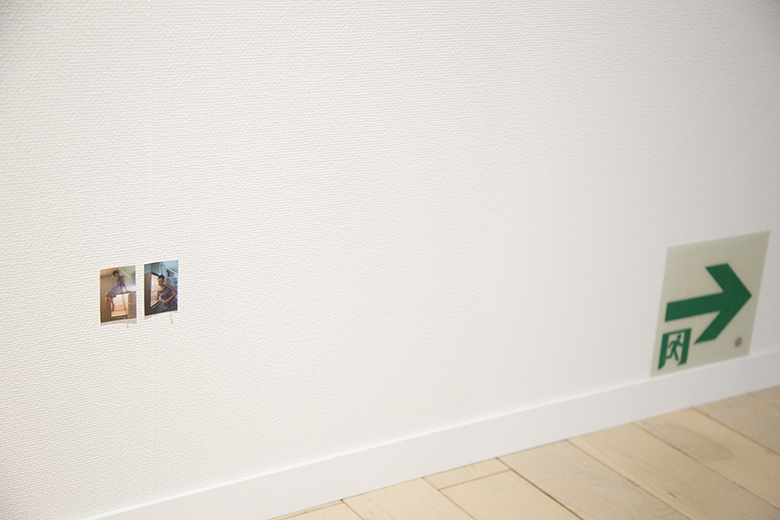






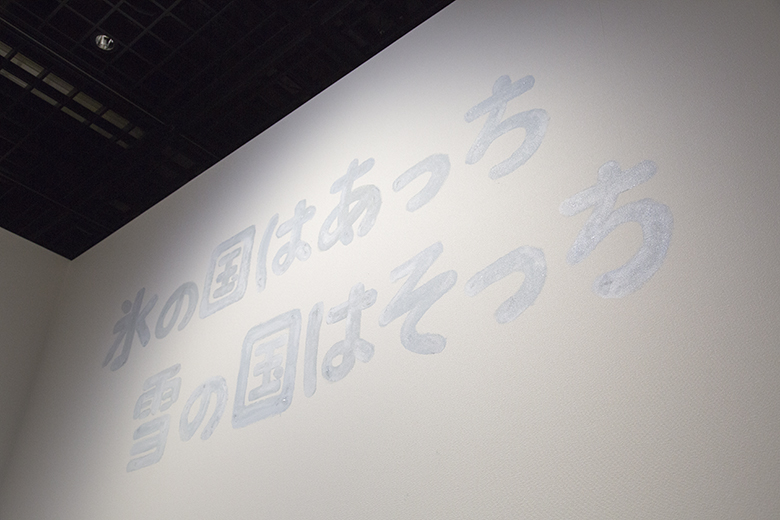





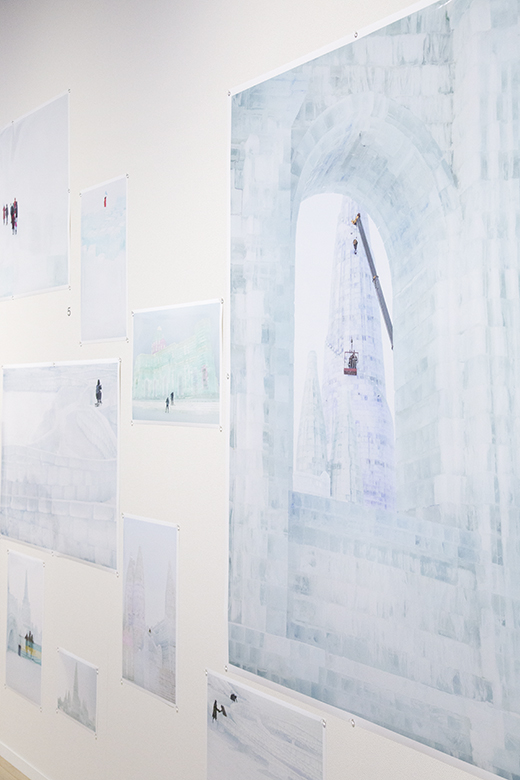




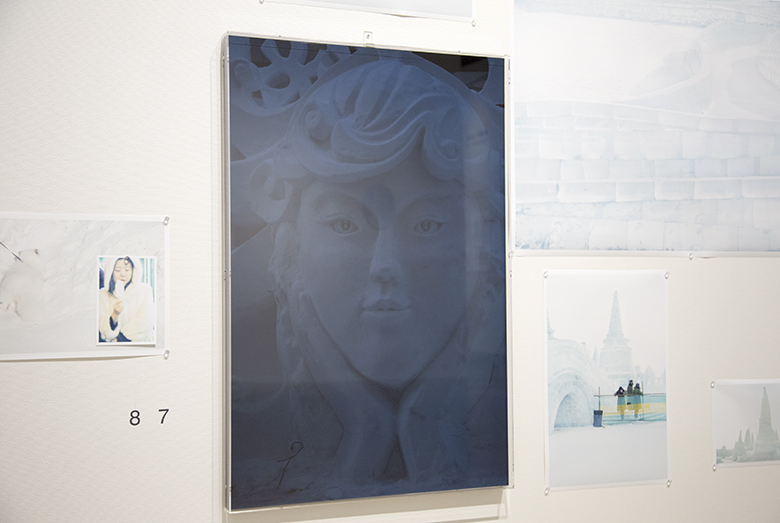
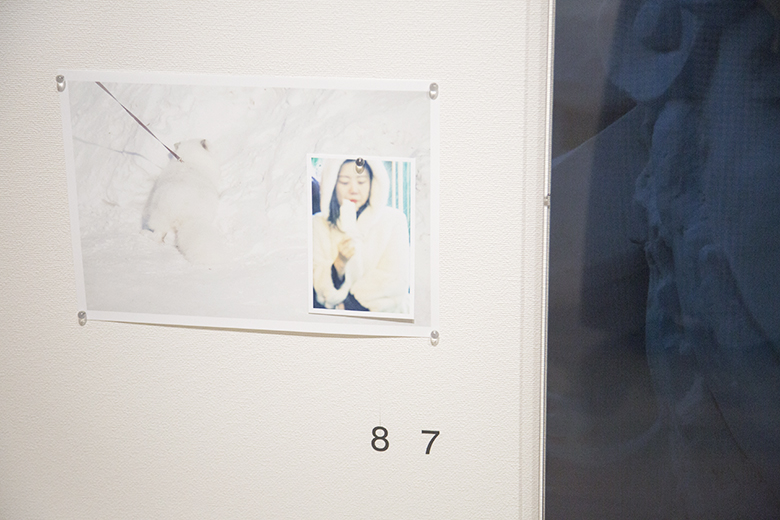

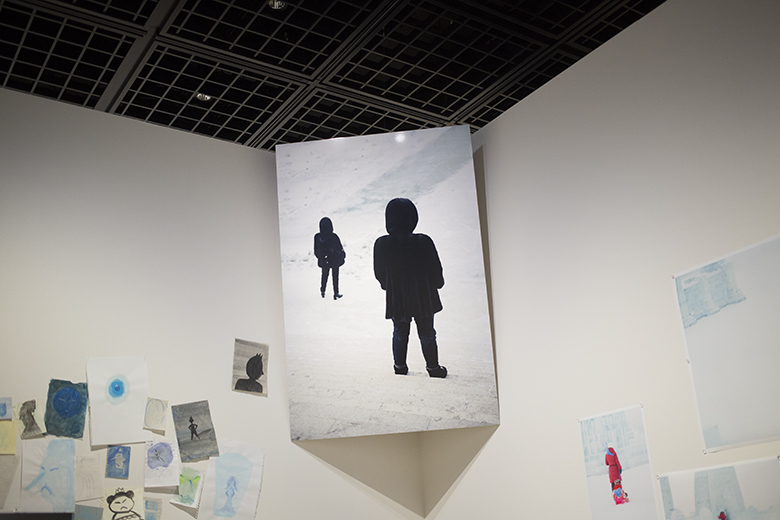

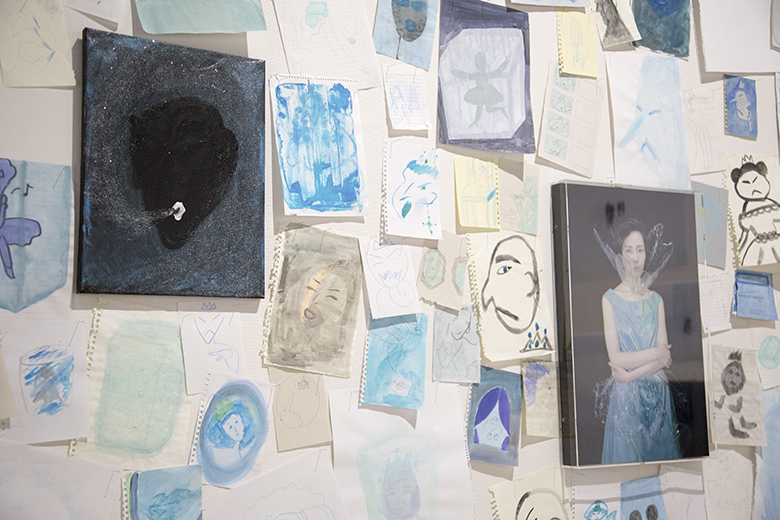

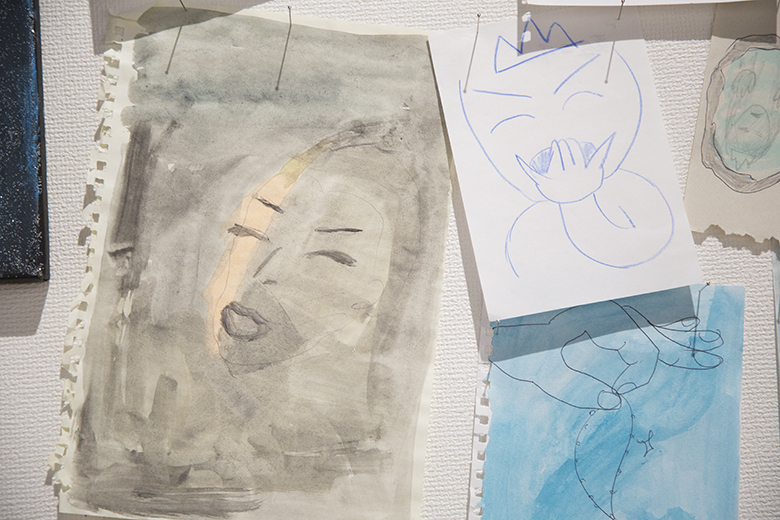







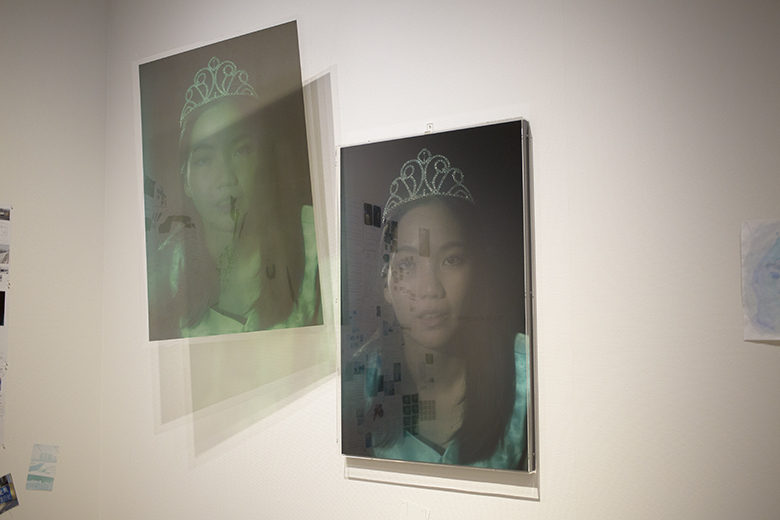
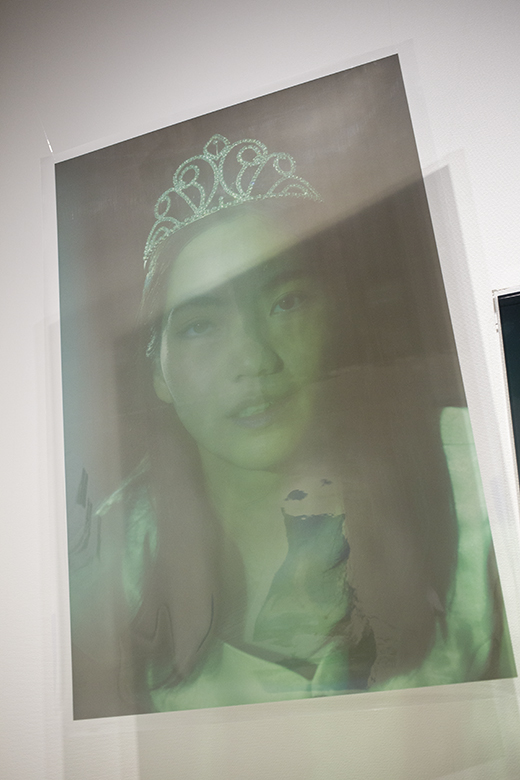
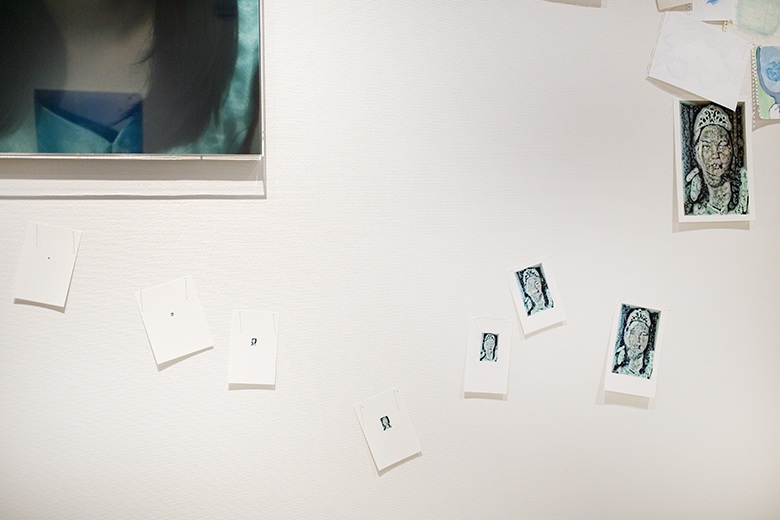

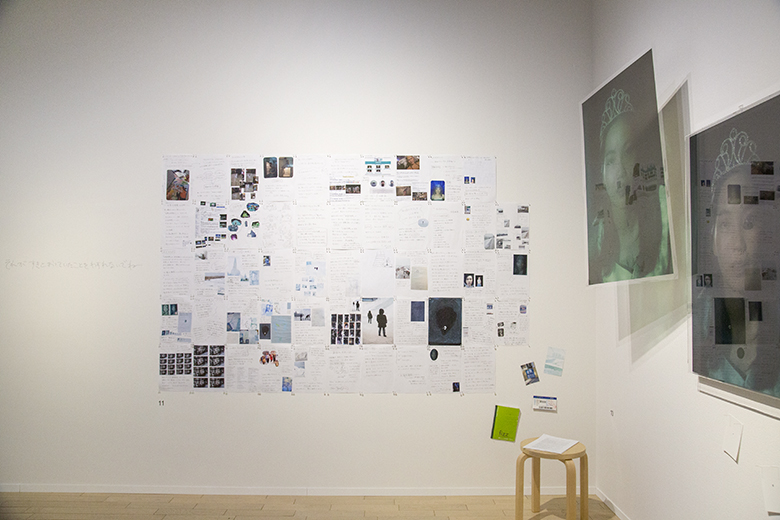
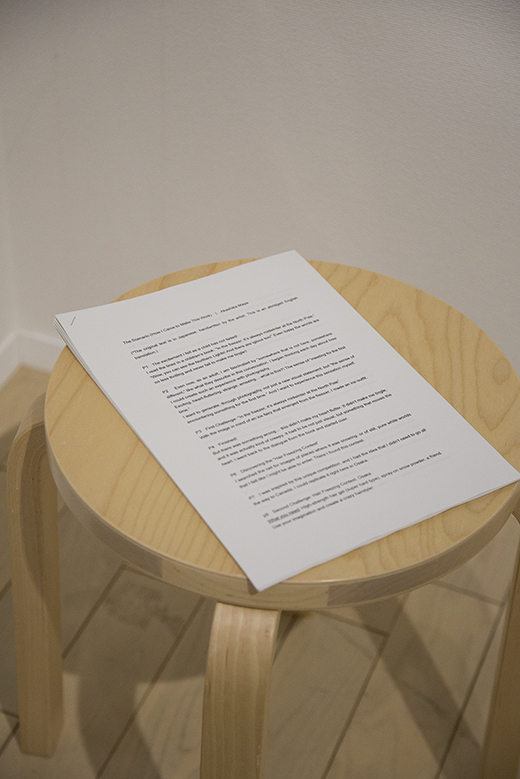




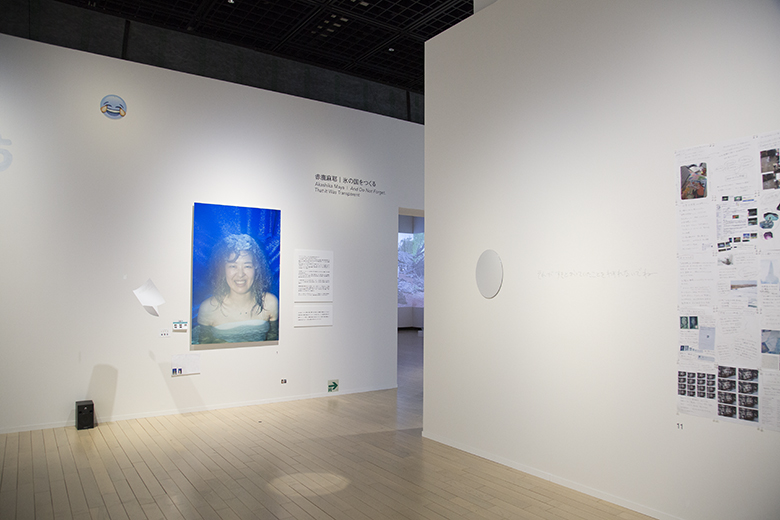
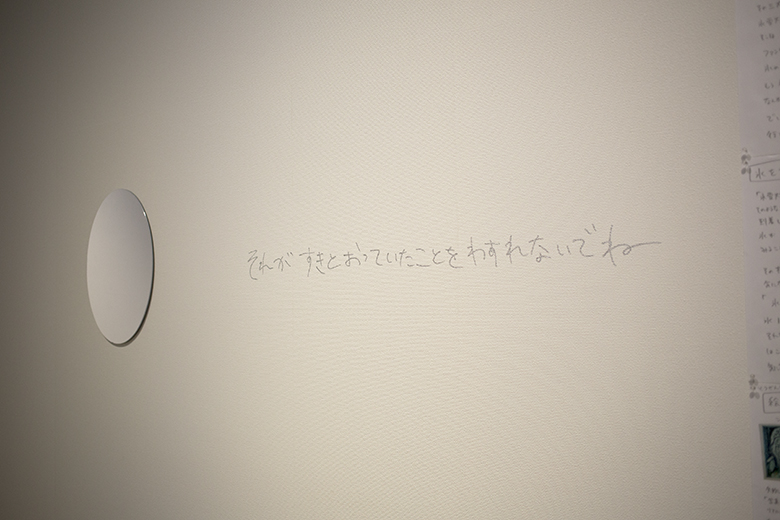
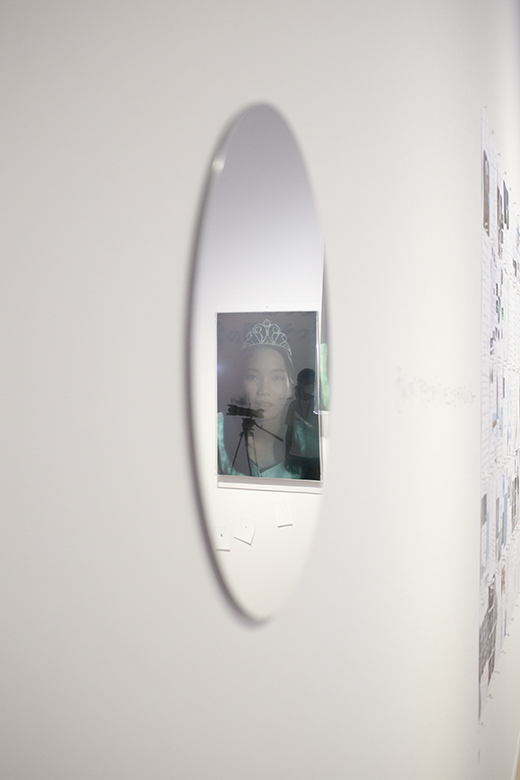
The Scenario (How I Came to Make This Work) | Akashika Maya
("The original text is in Japanese, handwritten by the artist. This is an abridged English translation.)
P1 The excitement I felt as a child has not faded!
I read the lines in a children's book: "In the freezer, it's always midwinter at the North Pole. "Wow, you can see the Northern Lights! And there are igloos too!" Even today the words are no less thrilling and never fail to make me tingle!!
P2 Even now, as an adult, I am fascinated by "somewhere that is not here, somewhere different," like what they describe in this conversation. I began thinking each day about how I could create such an experience with photography.
Exciting, heart-fluttering, strange, amazing... what is this?! The sense of "meeting for the first time."
I want to generate, through photography, cot just a new visual statement, but "the sense of encountering something for the first time." And I want to experience this sensation myself.
P3 First Challenge: "In the freezer, it's always midwinter at the North Pole" With the image in mind of an ice fairy that emerged from the freezer, I made an ice outfit.
P4 Finished!
But there was something wrong... this didn't make my heart flutter. It didn't make me tingle, and it was actually kind of creepy. It had to be not just visual, but something that moves the heart. I went back to the dialogue from the book and started over.
P6 Discovering the "Hair Freezing Contest I searched the net for images of places where it was snowing, or of still, pure white worlds that I felt like I might be able to enter. There I found this contest.
P7 I was inspired by this unique competition, and I had the idea that I didn't need to go all the way to Canada, I could replicate it right here in Osaka.
P9 Second Challenge: Hair Freezing Contest, Osaka
What you neek High-strength hair gel (super hard type), spray-on snow powder, a friend. Use your imagination and create a crazy hairstyle!
Results: ...it didn't go at all how I planned, an entry like this would be disqualified. The gel didn't keep the hair in place... And to make things worse, I clogged up my friend's bathtub drain with spray-on snow powder.
P12 Discovering Harbin Ice and Snow World
Back online, I looked around for cold places and ran across the world's three great ice and snow festivals." I was enchanted by one of these, Harbin Ice and Snow World. It's a theme park open only in winter, a kingdom of ice as fantastic and colorful as Disneyland. I forgot about trying to freeze the hair on my head, and determined I would set off to see this vividly colored ice world.
P15 Before the Journey to Building the Ice World...
I had already forgotten all about the Hair Freezing Contest, and the idea of trying to freeze hair myself. My interests were now in the following three things: (1) Traveling to Harbin, (2) Visiting the frozen theme park, Harbin Ice and Snow World, and taking photographs, and (3) Using ice to build my own little Ice World from my imagination (the kind that fantasy picture book).
P16 But just to go to Harbin, visit the theme park and take photos... would that be enough? I would just be taking home the scenery like a souvenir. I wasn't sure, but I had a feeling (a premonition) that it was more important to see the process of creating Harbin Ice and Snow World than the place after it was completed.
With that in mind, I decided to travel to Harbin one month before the completion of Harbin Ice and Snow World. I wanted to visit the construction site and see how that gigantic frozen park was created.
P23 The Ice Makers
Without knowing just when the construction of Harbin Ice and Snow World began, I arrived in Harbin, and I could already see ice being transported and piled up. As I observed the work in progress, there was one thing that puzzled me: "Where does all this ice come from?" (And where is it going to go afterward?) Evidently a single block of ice weighs 300 kg, and huge numbers of them were being hauled into the city one after another. Curious about the origins of the ice blocks, I followed the trucks transporting them.
P24 The Ice-Hauling Trucks
Trucks carrying ice drove all over the city prior to the opening of Harbin Ice and Snow World. I was on a mission to follow them. I took the bus, stood on a bridge and so on, to see what direction the trucks were headed. And I figured out was coming from! discovered that each day a thousand blocks of ice, each weighing 300 kg, were being cut out of the Songhua River.
P25 The Ice Palace Builders (Fairies)
Watching the construction process, I saw an enormous number of workers. Apparently nearly 10,000 workers employed by more than 100 companies work on the project, most of them farmers. They looked to me like fairies building an ice palace. The "fairies" had no concern with the size of what they were making, they just stacked the ice higher and higher. There are also 0,000 artists involved.
P30 The Ice Queen (1)
The Songhua is a large river that runs through Harbin. It freezes in winter, then melts in spring and flows once more. When I visited, I encountered an older woman who had a bizarre kind of aura about her, engaged in various activities and business dealings on the ice of the frozen
P31 I asked the woman if I could take her picture, but she just stared straight ahead without changing her expression. For some reason, another older woman next to her told me, "No, you can't take her picture." My request denied, I left, but I could not forget the always unsmiling lady I thought of as "the Ice Queen." I visited the place she had been, planning to ask one more time for permission to photograph her, but she was gone. She had appeared for just a short time and then vanished into thin air, like magic.
P32 I had failed in my mission to photograph the Ice Queen, but I didn't want to forget my encounter with her. I decided to recreate the Ice Queen with my own hands (i.e. through photography).
To recreate her through photography (visually) (1)
I could prepare pink clothing, a cigarette, and a tiara like the older woman was wearing when I met her, but probably what had really drawn me to her was the overall mood that she generated. How could I use photography to generate it again...? What stuck in my mind was the coldness of the woman's stare and how for some reason great anger seemed to lurk deep in her eyes.
P33 To recreate her through photography (visually) (2)
I wanted something a bit more blurred, as if from the world of fantasy, than what I had produced in version (1). Something between the real and the ideal. After completing versions (1) and (2), I still felt... was there some way to generate the feeling or sensation of encountering the woman? It seemed like the "realism" of photography was getting in the way.
P34 Sudden Detour: Between Painting and Photography
This is an (intentional) failure. I once happened to make a mistake with an inkjet printer (I printed on the back of the paper). The ink was not absorbed into the paper, it bled and floated on the surface. I recalled this and remembered thinking at the time "It's like a painting!" So this time I intentionally made same error. Observing the failed outcomes, I thought about various photograph? A bunch of ink on paper? What is real and what is unreal?"
The photographic images printed on the wrong side of the paper grew smaller and smaller. In the end they were like paintings, where the image is reduced to outlines.
P35 Recreating a "Sensation"
What I experienced with the Ice Queen was something that felt stranger than an ordinary encounter. It was one of those things you can't put into words.
What appears in the photograph are outlines, and they feel like part of the real world. To capture something like pure sensation in a photograph, it is necessary to obscure the outlines. If contour lines are too clear, you cannot show what a sensation feels like.
Would it be possible in a painting? Could painting accomplish the things photography is unable to do?
P36 If I paint about 100 paintings, maybe I'l get closer to the single photograph I wanted to take?
I have never studied painting. I chose the number 100 because when I'm working on a photograph, I find that doing the same thing 100 or so times gets me close to the result I'm looking for.
P37 In any case, I painted the Ice Queen again and again. It's more like "producing a new kind of photograph" than it is like "painting," so it might be appropriate to call what I painted "photography."
P51 End of the Journey to Building the Ice World
The Ice Queen's last words: "And do not forget. That it was transparent."
An Ice World cannot last forever. As soon as it is built, it begins vanishing little by little, and by the time the warmth of springtime comes it has disappeared completely. At the actual Harbin Snow and Ice World, too, structures begin to melt as spring approaches, turn to water, and naturally flow away.
